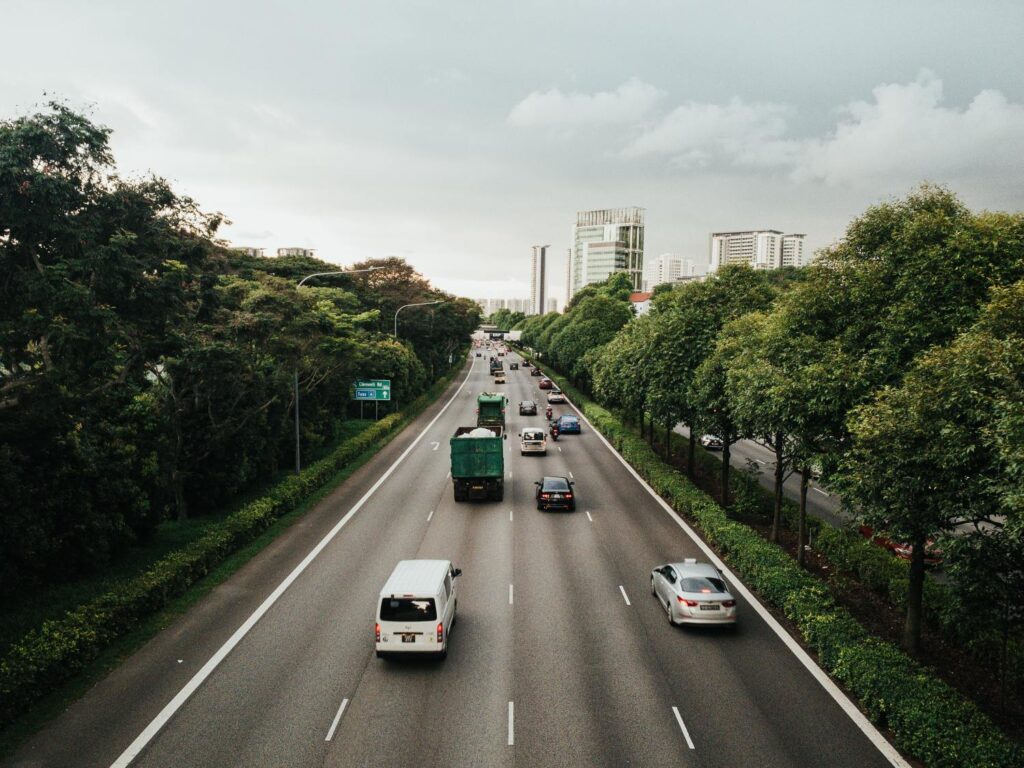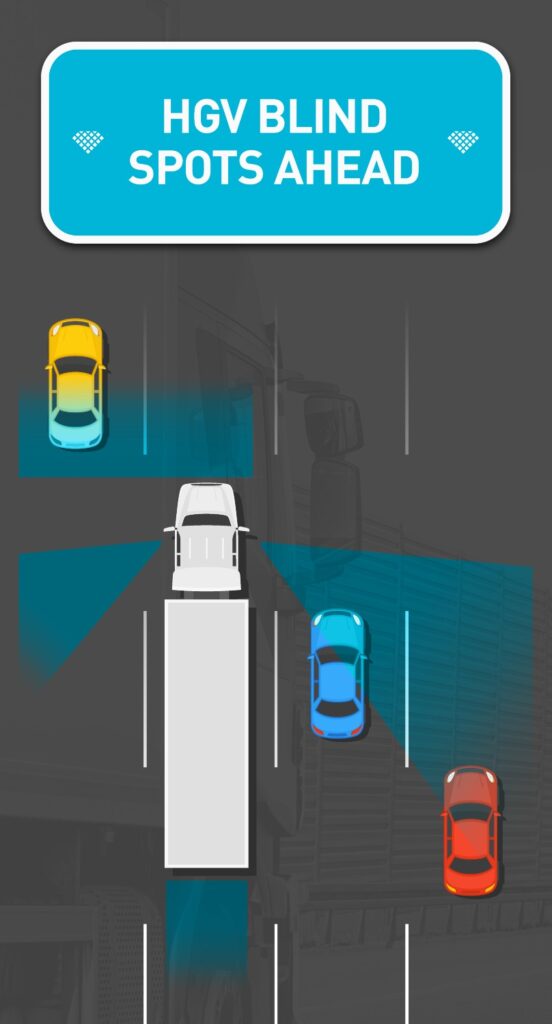Reduce HGV claims by informing your drivers about Limited Visibility Zones
There has been a rise in HGV incidents, sparking conversation around the lay-driver’s knowledge of HGV visibility. At Romero Insurance Brokers, a large amount of the fleet and vehicle claims we process involve HGV – whether that be a client fleet including HGVs or collisions with a HGV.
We want all our clients to know the dangers of driving alongside HGVs, and therefore we’ve produced the below information, as well as an infographic to be distributed to your drivers.
Furthermore, National Highways are running a campaign about understanding HGV visibility. The aim of the Know The Zones campaign is to improve safety and awareness for the average road user.
Large vehicles, such as heavy goods vehicles (HGVs) have zones of limited visibility and are considerably longer, heavier, and more powerful than standard vehicles. They also require a further stopping distance.
Other drivers often underestimate the size and position of these zones of limited visibility. Please be aware of the zones so you can stay safe.

What are HGVs?
HGV stands for Heavy goods vehicles, alongside LGVs for large goods vehicles. These are vehicles which can weigh over 3.5 tonnes when carrying a load, and include lorries, box vans, trucks.

Georgia Richmond, Fleet Insurance Broker at Romero Insurance Brokers
“HGV crashes make up a large percentage of total road accidents, they are quite often the most serious. The sheer size and weight of these vehicles, not to mention the added mass of goods in transit, makes them extremely dangerous in the event of a collision. In previous experience accidents involving HGVs have occurred due to blind spots and been careless whilst using a mobile phone. The majority of transport companies now have internal dash cams installed which monitors a driver’s ability and ensure they are stopping to take breaks – which should be a 45 minutes break for every 4 hours 30 minutes in any day. Fleet operators should remind drivers of these points in ored to reduce risk of an accident.”
Understanding the visibility of a HGV driver
To fully understand the perspective of a HGV driver, you first must get into the mind’s eye of a HGV driver. It’s true, car and van drivers don’t often realise the challenges faced by HGV drivers. Driving a HGV is a whole different skill than driving a standard road vehicle.
By respecting the below points, drivers will be able to action accordingly and help out HGV drivers:
Seating position – HGV drivers sit high up. This means when driving in front of a HGV, they may not be able to see you if you are too close to their bonnet.
Braking distance – HGVs have a far higher braking distance than cars and vans. Bear this in mind when driving and slowing in front of a HGV. Also, if you see a HGV driving unsafely, then be defensive and back off.
Large blind spots – Since 2007 double mirrors have been mandatory on all new lorries to reduce blind spots. However, even with this measure, HGV drivers still have a largely limited view compared to the average road user. Cars in HGV blind spots are invisible to HGV drivers. As a rule, if you are not able to see the HGV’s external mirrors or cameras, the driver cannot see you. Try to stay out of these blind spots.
Undertaking – The highway code does not allow undertakes. HGVs will need the leftmost lane to manoeuvre safely and slow. Do not undertake a HGV; if you find yourself doing so, for example in traffic, then stay out of their direct bind spot.
Road environments – Environments such as weather and traffic affect HGV vehicles differently. HGV drivers are specially trained to drive in different road environments and anticipate risks. However, it’s every road user’s responsibility to look out for each other on the road.Space – Give HGVs a wide birth when overtaking. They are affected greater by wind than a normal sized car.
Where are the areas of low visibility?
- Up front – When driving in front of an HGV ensure there is enough space between you and the HGV to allow them to see you
- Left side – This areas cannot be seen from the right-hand side driving position, nor by the left-hand side mirror
- Right side – The driver would need to turn to see this area, and the right-hand side mirror does not show it, it is also the most likely position for a HGV to move into
- Behind – A large area directly behind a HGV is not visible

Download Here
We have provided an infographic illustrating these limited visibility zones. The blue indicated the areas that cannot be seen by the lorry driver. We recommend clients download and distribute this graphic to their drivers and display it in their offices.
Can we better protect your fleet?
Having an experienced insurance broker who provides updates and delivers on cover is essential for commercial and corporate businesses. Fleet insurance is our speciality, and we promise to deliver the right level of fleet insurance for your needs. With the market hardening and insurers reducing their capacity for this risk, it’s important to work with professionals who know the market, can assess your claims history, and can negotiate with insurers.
And, if things do go wrong, such as a claim involving a HGV, it’s imperative to have a dedicated claims team on-hand to fight your corner. Romero Insurance Brokers’ claims team are here to quickly take control and process your claim and get you the best result.
Contact us to discuss the terms of your claims insurance, and perhaps arrange a confidential review.
Contact us

Arrange a Confidential Review
We will provide a benchmark on your current insurance without disturbing your relationship with you current provider.



